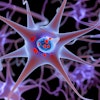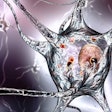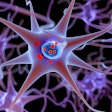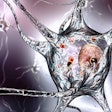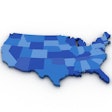
Two recent Parkinson’s announcements suggest a new biomarker test panel coming, as well as cell culture systems for studying Parkinson’s in the laboratory.
The first announcement comes from the Michael J. Fox Foundation for Parkinson’s Research. The organization awarded a $10 million grant to Menlo Park, CA-based Octave Bioscience Inc. toward development and validation of a new multianalyte protein biomarker test.
According to the announcement, Octave has already created a biomarker testing system for multiple sclerosis (MS) that is said to be used in more than 50 clinics. The Michael J. Fox Foundation grant offers the opportunity to leverage Octave’s work beyond MS and into Parkinson’s disease.
“Our goal is to create a powerful biomarker tool that addresses a variety of applications ranging from disease activity and progression, disease staging and subtyping, as well as disease modifying treatment development and monitoring,” stated Jim Eubanks, PhD, Octave’s national director for medical affairs and principal investigator of the project, as part of the announcement.
For many years the Michael J. Fox Foundation has funded research into identifying biomarkers specific to Parkinson’s. According to the foundation, there are a few advanced brain imaging techniques (e.g., DaTscan) that can help researchers measure Parkinson’s disease (PD) in its earliest stages, but no widely available and affordable biomarker tests have been conclusively validated. This is due to the variation in Parkinson’s from person to person, which -- along with the complex nature of brain diseases -- presents challenges in finding and validating PD biomarkers, according to the foundation.
In clinical trials, however, the Mayo Clinic and others are testing an alpha-synuclein seed amplification assay (SAA) to detect abnormal clumping of alpha-synuclein.
“Parkinson’s testing reveals if there are clumps of alpha-synuclein in spinal fluid,” according to the Mayo Clinic. Alpha-synuclein is a protein that, in humans, is encoded by the SNCA gene. “Research has found that checking samples of spinal fluid for the proteins can identify people with Parkinson’s disease. The test also detects people at risk of Parkinson’s disease but who don’t yet have symptoms.”
SAA is currently validated only in spinal fluid, but that is difficult to obtain, according to the Michael J. Fox Foundation. In addition, SAA gives only a positive or negative reading, instead of showing the degree of disease activity.
In other news, a recent study published in Progress in Neurobiology, led by researchers at the University of Arizona (UArizona) College of Medicine-Tucson, has used cells from Parkinson’s patients to create a human-derived laboratory model and new method to study the disease.
“Using induced pluripotent stem cell technology -- a powerful technique that transforms adult cells into embryo-like cells that can then mature into any cell type -- the lab programmed adult skin cells called fibroblasts into brain cells,” explained a UArizona news release.
Dr. Lalitha Madhavan, PhD, associate professor of neurology at the College of Medicine-Tucson, said the finding “can form the basis for better cell-culture systems for studying Parkinson’s disease in the lab, potentially leading to improved diagnostics and treatments.” This study also received funding support from the Michael J. Fox Foundation.
For the study, UArizona researchers assessed a range of processes including growth and morphology, redox status, mitochondrial structure and function, autophagy, alpha synuclein expression, and neuronal electrophysiology in the human fibroblasts and iPSC-derived dopaminergic neurons (iPSC-DAN).
“Fundamentally, our study discovers spontaneous disease-related phenotypes expressed in concert in both sporadic PD patient fibroblasts and iPSC-DAN,” the authors wrote, highlighting three important points:
- The data indicate that basic processes of Parkinson's disease can be expressed beyond the boundaries of the central nervous system and support the view of PD as a generalized metabolic disorder rather than a neuron-centric condition.
- Corresponding changes in the dopaminergic (DA) neurons, derived from the fibroblasts, suggest that dysfunction in peripheral tissues would also be associated with abnormalities in the brains of respective sporadic Parkinson's disease patients.
- The results imply that by taking advantage of the reprogramming effect, different patient-derived cells can be used as models to identify cell type-specific neurodegenerative mechanisms active earlier in the disease.
According to the UArizona news release, Madhavan hopes that the system could be used for a precision medicine approach, matching patients with optimized treatments based on a skin biopsy and lab test showing which drug might work best based on unique genetic profiles.

